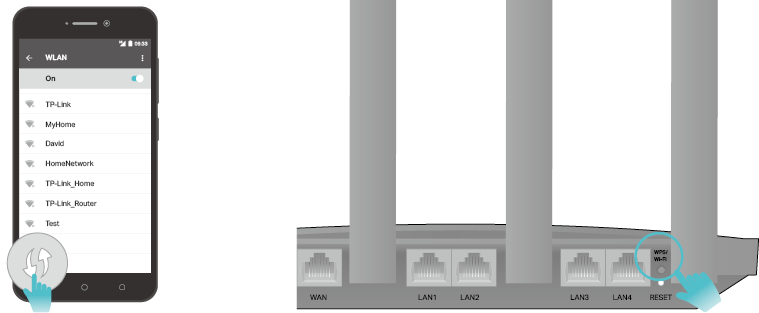

#Wps push button code#
This code is generated either by the WPS router or by the device to be connected. It is a unique 8-digit code that is supposed to make connecting a device to a WLAN router more secure. The WPS PIN stands for “Wi-Fi Protected Setup Personal Identification Number.” Sounds complicated at first, but in the end it is like the PIN on a smartphone. What is WPS and where can I find the PIN? With this method, you simply hold your NFC-enabled device near your router, and the connection is automatically established.

If your device does not have a WPS button, you can simply start the WLAN search and then press the WPS button on the router instead of entering the password. WPS button (push button method): With this method, you simply press the WPS button on your router and the device you want to connect.There are three options available to you, though not all devices support them.

#Wps push button password#
It bypasses the need to enter a complicated password by instead allowing a direct connection between the two devices – either by pressing the WPS button on both devices or by entering a WPS PIN. The WPS function is a standardized method that makes it much easier to establish a connection between a WLAN router and a WLAN-enabled device. Although this already has a few years on the hump and is gradually replaced by a QR code, you will still find WPS on most commercially available devices – whether old or new. WPS is supported by most devices that are currently available, since it is a standard. With the WPS button, you can connect devices directly to your WLAN without any network knowledge or settings. Where to find the WPS button on the router?.Connecting printers and multifunction devices with the WPS pin.What is WPS and where can I find the PIN?.The PIN entry method is supported in all devices. In this mode, Wi-Fi Protected Setup network encrypts data and authenticates each device on the network.
#Wps push button Pc#
PIN entry: in all Wi-Fi Protected Setup networks, a unique PIN (Personal Identification Number) will be required for each device to join the network. A fixed PIN label or sticker may be placed on a device, or a dynamic PIN can be generated and shown on the device's display (e.g., a TV screen or monitor). The PIN is used to make sure the intended device is added to the network being set up and will help to avoid accidental or malicious attempts to add unintended devices to the network.Ī registrar device (which could be an Access Point/wireless router, PC television, or other device) will detect when a new Wi-Fi device is in range, and prompt the user to enter the PIN, if he or she wishes to add the new device to the network. Users should be aware that during the two-minute setup period which follows the push of the button, unintended devices could join the network if they are in range.
The access point/wireless router will have a physical button, and other devices may have a physical or software-based button. Push-button configuration (PBC): in some Wi-Fi Protected Setup networks, the user may connect multiple devices to the network and enable data encryption by pushing a button. There are two primary approaches to network setup within Wi-Fi Protected Setup: push-button and PIN entry. PIN entry is mandatory in all Wi-Fi Protected Setup devices, while push-button is optional and may also be found in some devices.


 0 kommentar(er)
0 kommentar(er)
